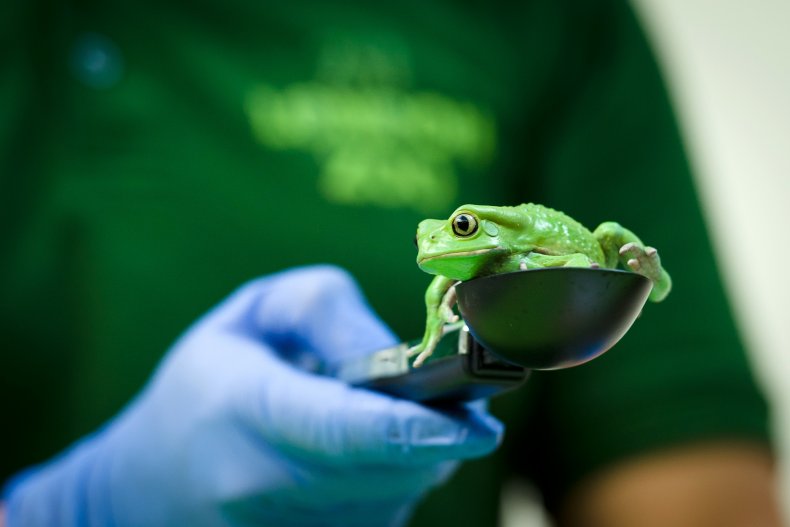Veterinarian Operates on Tiny Tree Frog With Severe Injury
As a veterinarian, especially an Australian one, Meaghan Barrow is no stranger to diagnosing and treating sick animals of all shapes and sizes. But even she was daunted by the prospect of operating on a tree frog so tiny that it weighed less than half a gram and measured less than two centimeters long.
Tree frogs refer to any one of around 800 species of amphibians that have a claw-shaped bone in their toes to help them scale tree trunks and other smooth surfaces, according to the National Wildlife Federation (NWF). In addition, they have sticky toe pads that further enhance their climbing abilities; many also have extra skeletal structures in their feet. While most tree frogs, like Barrow's patient, are small, the white-lipped tree frog measures four to 5.5 inches long, the NWF states
A nurse at one of the Royal Society for the Prevention of Cruelty to Animals Queensland's (RSPCA) Brisbane locations discovered the minute amphibian sitting on some foliage in the building and noticed it appeared to have an injury to its chest, according to abc.net.au. Worried, she went to Barrow, a senior wildlife veterinarian for RSPCA Queensland, with her concerns.
When Barrow examined the frog, she saw it was indeed severely injured. Specifically, the little animal had a proportionally enormous hole in its thorax, according to abc.net.au. The hole exposed its intestines and one of its lungs to the external environment, the national news outlet reported.
Describing the process of repairing the wound as "tricky," Barrow told ABC Radio Brisbane she and her staff administered anesthesia diluted by a factor of 1,000 to the frog to sedate it. Once the frog was knocked out, she went to work.
"We just had to use very tiny instruments, tiny needle and suture materials to pick him up," she said, noting that "frogs have really thin skin that they absorb oxygen and things through and that just makes it really difficult."
Despite her initial reservations, Barrow said the surgery went off without a hitch. She closed up the hole with a single suture that was designed to dissolve in time. By the next day, the frog had his color back and was even beginning to show signs of activity, abc.net.au reported.
"Sometimes when they have surgery and injury their color changes to brown, but very quickly he was bright green again and happy," Barrow said.
The frog received pain medication and antibiotics, again diluted by a factor of 1,000. Within a week, much of which it spent eating mealworms, it was released back into the wild.
The frog, which could fit on the tip of her finger, was the smallest patient she's had so far, Barrow said, though she has previously operated on "palm-sized" green tree frogs.


